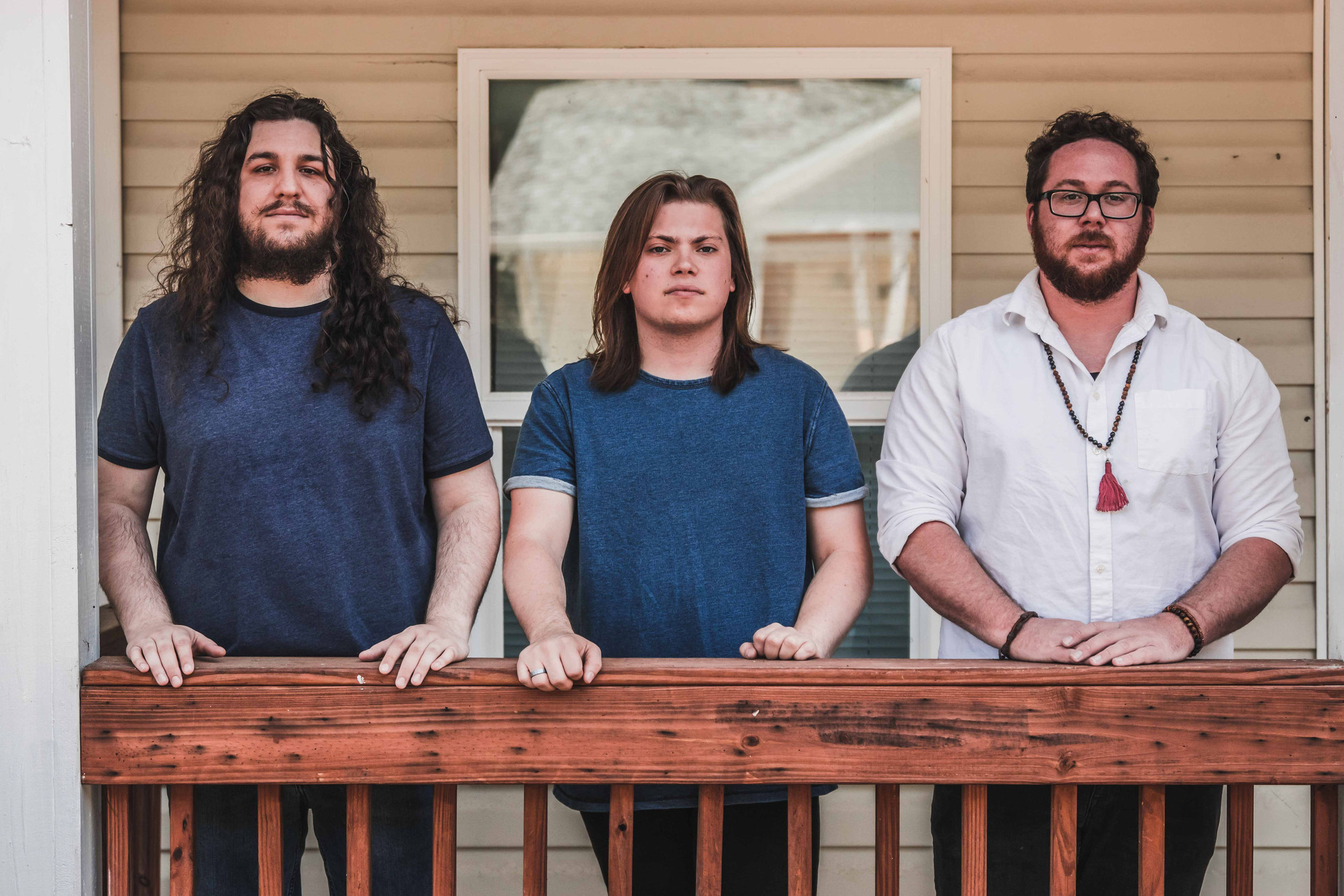
By Zackary Kozak
On March 21st, instrumental progressive metal band Sometime in February released their second album, Where Mountains Hide. The North Carolina based group began as an outlet for guitarist and songwriter Tristan Auman’s solo work. After recording the 2021 EP “Here Goes” on his own, Auman brought on drummer Scott Barber and bassist Morgan Johnson. Together they released their 2023 LP “There Goes,” proving their musical chemistry in and out of the studio with a series of live performances along the American east coast.
The band’s distinctive progressive metal sound has been built from the foundation of influential artists in the scene (Intervals, Haken, and Dream Theater) and a love for blending elements of post-rock and math-rock. In February 2024, the group signed with renowned progressive music label InsideOut Music; and, subsequently, recorded their new album with producer Jamie King, longtime collaborator with Between the Buried and Me – fellow Carolinians (and one of my favorite metal bands).
Where Mountains Hide presents Sometime in February at their most creative and sonically diverse. The eleven track album is a textured collage of metal instrumentation – an evolutionary history of the genre that extends into the future. Opening track “Palantir” bursts with energy. Complicated guitar lines broken up by bubbly chords in the vein of math-rock pioneers Chon interweave rhythmic accents and lively solo sections. The layered sound is very complex yet maintains a constant throughline of melody that is easy to snap onto, which is important in keeping the listener engaged, especially in instrumental music.
Third track “The Bad Fight” features Paul Waggoner, lead guitarist of the previously mentioned progressive metal band Between the Buried and Me. In the song’s music video, Waggoner acts as a court judge, hilariously bringing justice with a mesmerising guitar solo. The sixth track “What Was Said” offers up an interesting call and response dynamic between the quick guitar and bass parts, with the percussion countering cleverly placed rests to propel us forward toward the next rapid riff. “What Was Said” responds to the previous interlude “What Was Heard” by transforming the soft, slow line of music into an expanded, heavier rendition of the melodies. In this way, the song seems to speak to our internalization of music, and life for that matter: what we say can complicate what we originally hear.
My favorite song of the album is currently the eighth track “Bury You.” Whether or not this title is in reference to the kindred Between the Buried and Me, I do not know. But, what I do know, is that this song rocks in all its prog glory! It is hard not to headbang to the djenty groove of bass and guitar that bring with them a new musical intensity. A little less than halfway through this groove, the song opens up to an acoustic section – an ethereal breath of fresh air, a beautiful valley past the mountains. However, in the almost seven minute runtime (the longest of the album), there is still time for more metal mischief. As the instruments pick up speed and regain intensity, Petrucci-esque solos emerge and Meshuggah-esque breakdowns shatter the peace that was built in the acoustic section.
The next two tracks are coupled together: “Homeworld I: Green Mountain” and “Homeworld II: Dislodged.” They cultivate a grand image by exploring the extremes of the album’s musical aesthetic. All tones are tested through the technical mastery of each instrument, and the bold musical composition feels particularly cohesive. The eleventh and final track “Funeral House” begins as a somber goodbye but eventually unravels into a powerful bout of energy to close the album with an emotional bang.
With Where Mountains Hide, Sometime in February has cemented themselves as a new name in progressive metal. The album’s production and performance both serve as a reminder that styles and sounds are always progressing and never dwindling in creativity. Go listen to the innovative instrumentation of Where Mountains Hide and experience the development of Sometime in February’s musical personality.